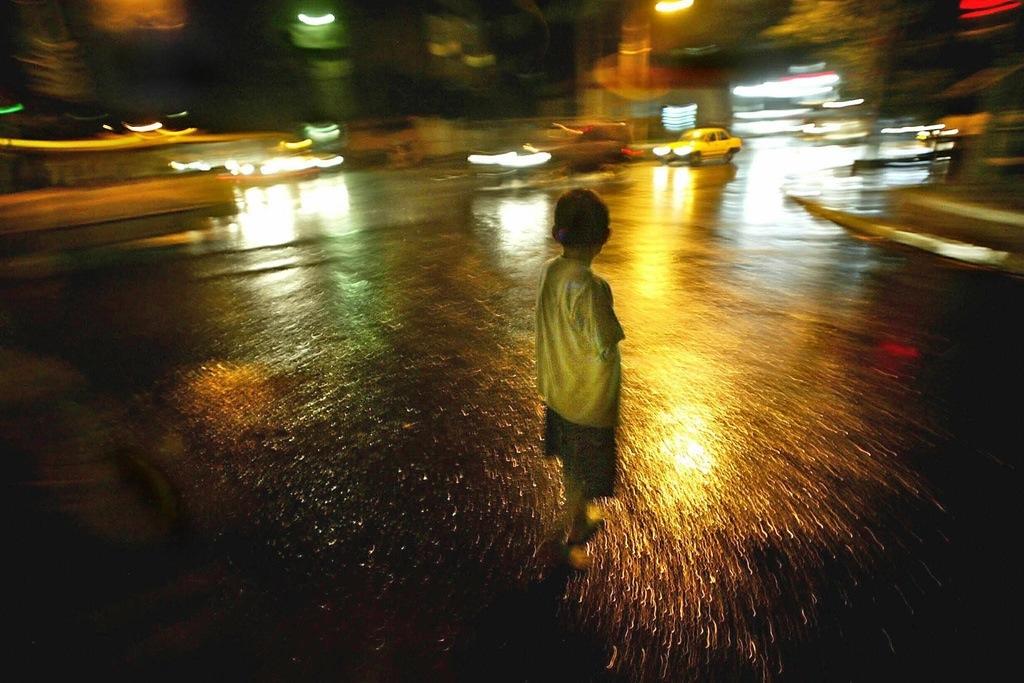Central America: United they stand, or divided they fall?
A child addicted to drugs in San Salvador on June 26, 2003.
MANAGUA, Nicaragua — Central America has long been viewed as a smugglers’ corridor connecting lucrative black markets for drugs, guns and other contraband in North and South America.
But this umbilical stretch of isthmus is no longer just a transcontinental thruway for the hemisphere’s $34 billion illegal drug economy. Central America now plays an active role in the illicit drug trade and has proved itself to be a vital player in providing logistical support to transnational cartels, according to local and regional experts on the drug war.
“Central America has gone from being a passageway, to a warehouse, to a giant 7-Eleven of illegal services — a 24-hour service station,” Eduardo Stein, former vice president of Guatemala and head of the Central American Network of Think Tanks and Advocacy Groups, said in a phone interview.
Stein, other drug-war experts and political leaders — including the administration of U.S. President Barack Obama, Salvadoran President Mauricio Funes and Guatemalan President Alvaro Colom — stress the urgency of developing new coordinated approaches to combating an increasingly regionalized problem.
Unfortunately for Central America, despite some patchy examples of cooperation, teamwork is harder than it sounds.
In Central America’s northern triangle, Guatemala and El Salvador have made some advances toward adopting similar legislation to combat gangs and other criminal organizations. And in the south, neighboring Nicaragua and Costa Rica are hatching a new agreement to coordinate cross-border pursuits of drug-runners.
Nicaragua, despite the political rhetoric of its government, has also proved to be a very willing partner to the United States in military cooperation and drug-war efforts. On May 10, the Nicaraguan National Assembly approved an urgent request by President Daniel Ortega to authorize the direct participation of U.S. military personnel in Nicaraguan anti-narcotics operations starting in August.
Yet despite some signs of cooperation, greater regional integration efforts to combat drugs and organized crime have been less effective.And some cynics quietly wonder if powerful interest groups that benefit from the current situation aren’t deterring further cooperation. An estimated $6 billion in drug money is laundered through Central America each year, providing some of those groups with plenty of motive to maintain the illicit status quo.
Back on the surface level, talk of integration and teamwork continues. In June, the presidents of Central America are expected to unveil the region’s first attempt at a joint strategy to combat organized crime and to tap the Obama administration’s promise to provide $200 million to fund regional drug-war efforts. Not everyone is confident the effort will bear fruit.
“It's unlikely that the five countries of Central America can come together on a common strategy with shared objectives, responsibilities and resources. Distrust is too high, and it's worsened by corruption,” said Adam Isacson, director of the Regional Security Policy Program at the Washington Office on Latin America.
Isacson thinks Obama’s $200-million carrot is good incentive to cooperate, but says integration will most likely take the form of alliances between specialized intelligence or crime-fighting agencies. “Anything bigger — a single regional policy or a genuine alliance against organized crime — isn't going to happen,” he said.
While politics has become a major obstacle to Central American integration, in some cases it can also be a catalyst for integration.
Stein says that in the case of Guatemala, where citizen security has become the main issue in the 2011 presidential campaign, the government of President Alvaro Colom is feeling pressured — and electorally motivated — to make quick and definitive advances to integrate anti-organized crime efforts with neighboring El Salvador and Honduras.
Yet far from an integrated isthmus, Stein says, the region today can be viewed as “three different Central Americas.” He says the northern triangle of countries (Guatemala, El Salvador and Honduras) is shaping up to be one bloc on the top of the isthmus, Costa Rica and Panama — countries with more robust economies and higher standards of living — form a second bloc at the bottom, and Nicaragua is doing its own thing in the middle.
The illegal drug trade, however, is becoming a common thread that binds the region. As drug wars rage in Mexico and Colombia, the cartels have pushed deeper into Central America, where weak state institutions, inadequate legislation, corruption, regional disintegration and poverty provide fertile grounds for organized crime to grow sturdy roots. Today, 90 percent of all illegal drugs entering the United States come through Central America.
As violence and insecurity worsen across the region, some analysts think the drug problem might have a better chance of uniting the region than any other issue.
“The odds that countries in the region will come together are not that bad. Even Nicaragua under Ortega has been a very constructive partner when it comes to fighting drug trafficking,” said former Costa Rican Vice President Kevin Casas-Zamora, a senior fellow and Latin American expert at the Brookings Institute in Washington, D.C.
However difficult, integration is necessary, analysts insist.
If the status quo persists, Stein predicts “Central America will go from being a 7-Eleven to a gigantic aircraft carrier for the drug trade” within five or 10 years. But he adds, “We are not on a dead-end street. We are in a situation where change is still possible.”
Our coverage reaches millions each week, but only a small fraction of listeners contribute to sustain our program. We still need 224 more people to donate $100 or $10/monthly to unlock our $67,000 match. Will you help us get there today?
